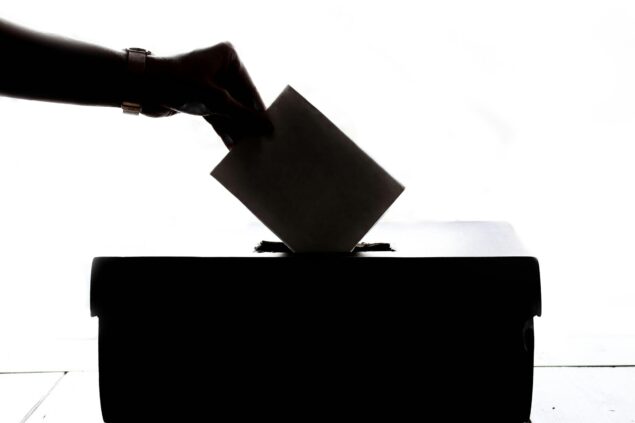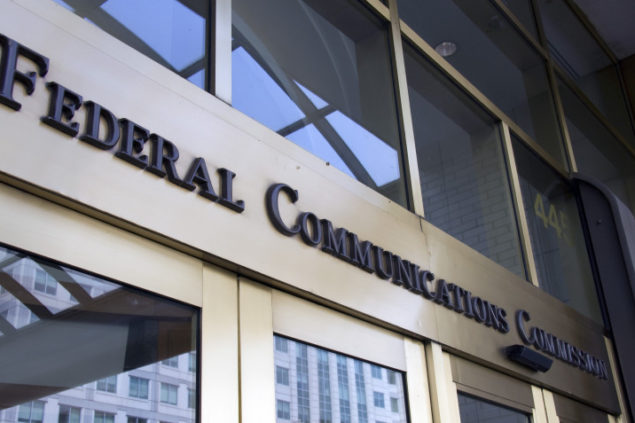Big Tech & The Whole First Amendment
Craig Parshall

This post is part of the “Governing the Internet” blog series, which features a range of viewpoints on topics involving internet regulation.
The series is co-sponsored by the Regulatory Transparency Project and the Federalist Society’s Practice Groups.
In their piece “FCC’s O’Rielly on First Amendment & Fairness Doctrine Dangers,” Neil Chilson and Adam Thierer criticize those on the left and right who they believe have abandoned the First Amendment. They contend that free speech guarantees meant to be a shield against official suppression of speech are now wrongly being wielded as a sword against Silicon Valley companies. They write that the problem comes from recent calls for legislative or regulatory restraints on tech giants like Facebook, Google, Apple, Amazon, and Twitter to rectify their increasing appetite for viewpoint censorship.
This issue is an unintended consequence of the extraordinary legal protections granted to technology companies by Congress in Section 230 of the Communications Decency Act. What was meant as a stimulus for innovation in 1996 and was enacted in return for Internet platforms voluntarily screening out harmful content accessible to children while also expanding diversity of information and opinions has become something much different. It has become an enabler of viewpoint discrimination, emboldening a hand full of giant digital platforms to decide what news, information, and viewpoints America ought to share or read.
A Parade of Viewpoint Suppression
The long trail of censorious content decisions by those five companies stretches back a decade and continues unabated. Recently Amazon refused advertising of a book because of its politically incorrect view of transgender issues. This has happened before on Amazon, as well as on other platforms. For example, a press conference of physicians critical of some COVID-19 public-health measures was recently blocked on Facebook and on its platform Instagram, as well as on Google’s YouTube site.
The FCC hasn’t missed this trend, noting in its 2018 Restoring Internet Freedom Order:
If anything, recent evidence suggests that hosting services, social media platforms, edge providers, and other providers of virtual Internet infrastructure are more likely to block content on viewpoint grounds.
In support of that proposition, the Commission’s two-page long footnote number 983 listed a host of articles describing acts of Silicon Valley viewpoint suppression in the months leading up to the FCC’s order.
In their article, Chilson and Thierer don’t dispute the fact that viewpoints have been suppressed. They base their approach instead on the First Amendment right of private companies—including those Internet giants—to govern the content on their own platforms without restriction. But that approach ignores the way monopoly power may affect third-party citizen users whose voices are being silenced and the anticompetitive damage done to smaller competitors.
Of course, Chilson and Thierer might object to my references to “censorship.” After all, censorship in the strict sense only occurs when the government is the one suppressing the speech. Because Big Tech companies are privately owned entities and not state actors, they argue, not only are they incapable of “censoring” the expression of their Internet platform users when they block their posts or disable their accounts entirely for content reasons, but in fact, something even worse is at play: those companies have become the real victims.
The primary flaw in this portrait drawn by Chilson-Thierer is their one-dimensional view of the First Amendment. Their approach, when reduced to a logical syllogism, looks like this:
The First Amendment is meant to restrain only the speech-suppressive conduct of state actors.
Big Tech companies are not state actors.
Therefore, Big Tech should not be restrained for free speech reasons.
Unfortunately, it isn’t that simple. In application, the First Amendment is multi-dimensional. In those various dimensions we see a clear constitutional case for legislating the way in which large, market-dominant Internet platforms should—or should not—be allowed to continue using Section 230 as a bulletproof shield against most legal liability. Further, constitutionally sound constraints could vindicate broader free speech values in the process.
Section 230 Immunity as Government “Sponsorship” of Big Tech
One wrinkle in a too-simple First Amendment approach is the doctrine that applies when government subsidizes speech. When Congress or a presidential administration pays for expression from private parties, including corporations, it can limit the message of those speakers, forcing them to tailor it to the values advanced by government.
Despite arguments that this doctrine should be limited strictly to cash subsidies, the Supreme Court has determined that tax benefits qualify as a “subsidy,” as well as other benefits that are “equivalent” to cash. When federal grants to private artists for creative expression have been conditioned on the “decency” of the content as an example, the Supreme Court has affirmed them.
The benefits that Big Tech companies receive from Section 230’s immunity protections are obviously “equivalent” to cash subsidies, because they save those companies from costly damage judgments. The law was recently the basis for the decision by the Second Circuit in Force v. Facebook to dismiss substantial damage claims against Facebook that it had unlawfully assisted Hamas by permitting posts that encouraged terror attacks in violation of antiterrorism and Israeli law and that resulted in the deaths and injuries of Americans. The U.S. Supreme Court declined review. Similar cases, due to Section 230, have been nearly “universally unsuccessful,” as one online commentator noted.
With Section 230, Congress granted an unparalleled gift of legal protection to information technology platforms. The quid-pro-quo was their expected conduct in moderating content from third-party users. The intent behind Section 230 was to incentivize tech platforms to screen out harmful and offensive content while also providing a “forum for a true diversity of political discourse, unique opportunities for cultural development, and myriad of avenues for intellectual activity.”
It is time that they be required to live up to their part of the bargain; namely, expressly conditioning their protection under Section 230 in return for their use of a First Amendment free speech paradigm for their decisions on third-party content
What better example of objective free speech standards could we have than those First Amendment principles decided by justices appointed by an elected president and confirmed by elected members of the Senate, applying the ideals laid down by our Founders? I will take those over the preferences of brilliant computer engineers any day.
Dismantling the “Fairness Doctrine” Myth
Chilson and Thierer spend much time on the “Fairness Doctrine,” but this is a false flag.
Yes, the Supreme Court ruled in Red Lion Broadcasting Co. v. FCC (1969) decided that the opportunity-for-response requirements of the “fairness doctrine” was constitutional, particularly in the context of personal attacks and public issue debates. That rule was later wisely abandoned by the Reagan administration’s FCC; wisely, because the regulation had resulted in self-censorship rather than enhanced free speech.
But this hides the fact that broadcasters who were the targets of that FCC rule were, and still are, content creators. As such, First Amendment balancing tests ought to err, with some limited exceptions, on the side of broadcasters’ free-speech rights.
By contrast, Internet platforms like Facebook, Google, Apple, Amazon and Twitter are not content creators, but platforms that exist primarily for the distribution of the content of third parties; i.e. our content. That is something they have readily admitted. As an example, as part of a congressional hearing Mark Zuckerberg stated plainly, “Facebook does not create or edit the content of our users published on our platform.”
Of course, a newspaper as a content creator has, and must have, a First Amendment right to make editorial decisions of inclusion and exclusion. But it would be odd to say that the same level of free speech protection should also be separately offered to an independent printer who runs the machinery that prints that content, or the paper boy or girl who delivers it. If the big tech platforms say they are mere conduits or distributors of content, and not content creators, they shouldn’t be entitled to the First Amendment protection that newspaper and magazine editors have.
On the other hand, if they want the power to suppress certain content for viewpoint reasons—i.e. to selectively editorialize on viewpoint grounds—then they really are “publishers,” and should face the legal liability that accompanies such a position. Yet, regardless, Section 230 can shield them from legal exposure in either case. This is the quagmire created by the legal immunity granted currently to those companies under Section 230.
Beyond that, there are additional considerations when the Internet platforms at issue are ones that exert huge market dominance.
Market Dominance Makes a Difference
One of the most important parts of the First Amendment calculus in this issue is the degree of Big Tech market dominance, and the adverse effects that result. While the “harm to consumer welfare” element of antitrust doctrine traditionally focuses on matters such as detriment to price, availability, or quality of goods, the Microsoft antitrust litigation brought by the Department of Justice advanced the concept that innovation stifled by anti-competitive conduct fit the bill of “harm” to consumer welfare.
Further, Big Tech companies like Amazon and Apple are so powerful that they can wield what’s now called “monopsony” power, not just monopoly influence; a subtle power in the digital economy to slash costs, keep prices low, and artificially suppress a market thereby hobbling innovation.
This brings us to another kind of innovation, one that’s hidden from the public view. It has to do with how Big Tech companies use both algorithms plus human review during content moderation. This review process has resulted in the targeting, suppression, or down-ranking of primarily conservative content. As such, this process, should it continue, should be considered a kind of suppressive “innovation” in a quasi-antitrust analysis.
How the process harms “consumer welfare” is obvious. A more competitive market could produce social media platforms designing more innovational content moderation systems that honor traditional free speech and First Amendment norms while still offering features and connectivity akin to the huge players.
As just one example, Parler hews the closest to a First Amendment paradigm for content decisions, but has only 2.8 million users compared to Facebook’s 2.6 billion.
Unlike NASCAR, where the cars start at the same time with the same flag, and can create some 88 lead-changes among drivers in a single race, a small handful of Silicon Valley companies have gained an early and monolithic lead in the digital engagement and market power race, unlikely to be challenged any time soon—in large part thanks to our existing laws that many do not wish to reform, even in the face of evidence that they ought to be reformed.
It is time to factor in this new consumer “harm” metric; namely, the ways in which Big Tech dominance and practice damages citizen free expression and public discourse.
The Constitutionality of Restricting Dominant Big Tech
In principle, restrictions on Big Tech can be constitutional. In its March 2019 report, the Congressional Research Service concluded that such restrictions could be legal if social media sites “threaten the use of the medium for communicative or expressive purposes …”
In its 1945 decision in Associated Press v. United States, the U.S. Supreme Court ruled that when even a market-dominant private media company acts so as to broadly constrict “the flow of news,” the public interest in diversity of information can be “defeated by private restraints no less than by public [governmental] censorship.”
Decades later, in the two Turner Broadcasting cases against the FCC’s “must-carry” regulations, the Court twice upheld the requirement that cable companies provide inclusion of content from local stations, despite the putative First Amendment rights of the cable networks.
Later, Justice Brett Kavanaugh, sitting as an appeals judge on the D.C. Circuit Court of Appeals, summarized the key concept of “bottleneck monopoly” that lay at the heart of the Turner decisions:
In its 1994 decision in Turner Broadcasting, the Supreme Court ruled that the Cable Act’s must-carry provisions might satisfy intermediate First Amendment scrutiny, but the Court rested that conclusion on ‘special characteristics of the cable medium: the bottleneck monopoly power exercised by cable operators and the dangers this power poses to the viability of broadcast television…’ When a cable operator has bottleneck power, the Court explained, it can ‘silence the voice of competing speakers with a mere flick of the switch’ … In subsequently upholding the must-carry provisions, the Court reiterated that cable’s bottleneck monopoly power was critical to the First Amendment calculus … The Court stated that ‘cable operators possess[ed] a local monopoly over cable households …”
Considering how easily huge Internet platforms can shut off the voices of third-party users whose ideas they don’t like “with a mere flick of the switch,” the reasons to use the Turner rule in analyzing the relationship between tech companies and the First Amendment become especially compelling.
Looking for a Remedy
In short, and as I’ve written elsewhere, Section 230 should be amended.
Congress should create free-speech conditions for the liability protections for market dominant tech platforms whose trade is third-party content. Subject to the complexities of digital platforms and the scale of content moderation, those companies under 230 should be required to reasonably integrate the well-worn principles of the First Amendment guided by Supreme Court caselaw into their content decisions.
Public discourse, a full-throated concept of free speech, and a fully informed electorate are at risk if Congress fails to address this issue.

Topic
Sponsor
Federalist Society’s Practice Groups
Series

The Federalist Society and Regulatory Transparency Project take no position on particular legal or public policy matters. All expressions of opinion are those of the author(s). To join the debate, please email us at [email protected].




